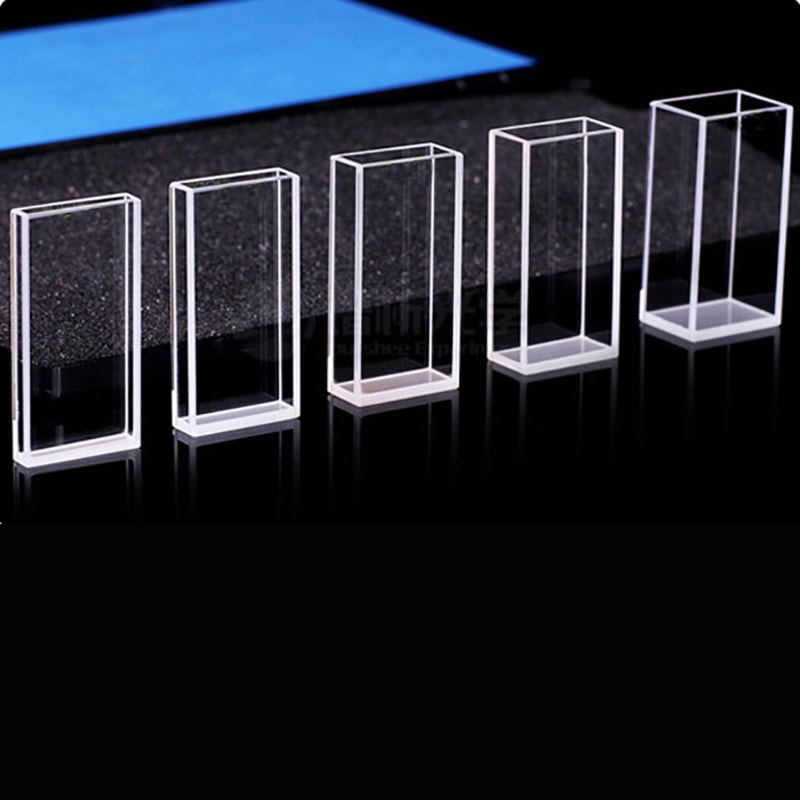Spectrophotometry that reveals the secret of light transmittance and absorption at particular wavelengths, is an essential method of scientific discovery. The cuvette is at the center of spectrophotometry. It is a small but vital vessel that is used to store samples for analysis. The tiny containers may appear simple, but their design complex, from cuvette’s length and material selection are the key to unlocking precise information on the concentration of substances and their quality. Explore this fascinating realm of cuvettes and their dimensions. They affect the results of all experiments.

Image credit: cuvet.co
Power of Cuvette Pathlength
Imagine a light beam passing through a specimen. What happens is largely dependent on the cuvette path length and the distance light travels through the liquid. A lot of labs employ a standard cuvette with a 1 cm path. This is the ideal compromise between practicality and sensitivity. What’s the reason? The longer the path of light, the greater the amount of light that is absorption. Therefore, the signal will be amplified with weak samples. For concentrated solutions, such as nucleic acids and proteins, shortening the length of the path can be a game-changer. It eliminates the need for dilution, while also preserving precious samples and cutting back on the preparation time. What can we learn from this? The art of matching the path length with requirements for samples is subtle and improves reliability.
Cuvette Dimensions and Size More Than What Meets the Eye
Cuvette size isn’t just about how much liquid fits inside it’s about how the vessel interacts with the spectrophotometer. They come in different volumes and shapes to suit particular applications. Semi-micro cuvettes have smaller sizes but have more robust walls. They are great for tiny sample sizes. The thicker walls decrease the area inside, which allows light to flow through without losing any drops. This is a significant improvement over a standard cuvette. It requires fewer steps to pipette, allows for fewer errors and produces results that are reliable. It’s a clever tweak that proves size isn’t just a number, it’s a strategy.
The 1 cm path length Cuvette is one of the lab’s most popular
Why is a cuvette with a length of 1 cm being used in a lot of research? It’s the sweet spot for biological tests, as there are a lot of samples and every milliliter matters. This standard design gives consistently high absorbance without overpowering the detector. This makes it the ideal choice for everything from DNA quality checks to enzyme tests. This isn’t a perfect solution for every situation. If you swap it out for a cuvette with different geometry or length, such as one used in emission studies it can result in results that are very different. It is crucial to select the appropriate instrument, not just the one you feel most comfortable using. A wrong cuvette can be compared to an un tuned instrument.
Material Matters beyond Size and Path
Cuvette dimensions are only part of the story. The choice of the material is the final piece. Quartz and glass cuvettes are renowned for their high light transmission rates. These cuvettes are durable they can be reused and are ideal for spectroscopy. However plastic cuvettes are affordable and convenience. They don’t require cleaning or cross-contamination. Simply use the cuvettes and dispose. For quick aqueous solutions, or DNA and RNA tests, they’re tough to beat. What’s the downside? The trade-off? Quartz is the preferred choice for purists while pragmatics could prefer plastic.
The art of precision in practice
The variety of cuvettes is what makes them attractive. With spacers, short paths can be utilized to handle large quantities of sample. Larger vessels are suited for bulkier volumes. Each choice in length and size and the kind of material have an impact on the experiment. This may affect the quality of the results. Imagine a laboratory measuring an uncommon protein: A semi-micro cuvette that has shorter paths avoids the dilution issues, and delivers reliable information quickly. Contrast that with a reckless switching of cuvettes in the middle of an experiment and you’ll notice that the numbers drop. Small details make the greatest impact on the field of spectrophotometry.
Cuvettes may seem small, however their value is enormous. Cuvettes come in a variety of sizes and shapes, ranging from the cuvettes with 1cm length to ones that are custom made. They can bridge the gap between sample and insight. If you’re looking for precision or purity using the correct cuvette, you can turn a good measure into a fantastic one-of-a-kind proof of the fact that precision in science starts with the tools on disposal.